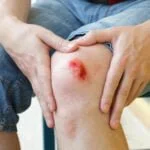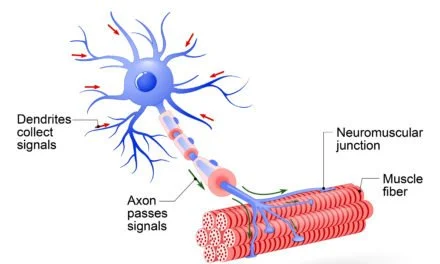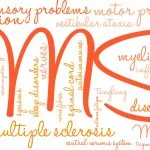
How PEMF Therapy Saved Racehorses Early in PEMF History

Did you know that PEMF therapy saved racehorses early in the history of PEMF therapy, when it first came to the United States?
Although this therapy was not widely accepted in the United States, it was introduced first through the use of this therapy in veterinary medicine.
These horses were the perfect candidates, notorious for being shot when their legs were broken because they were regarded as “no longer useful” once they suffered a broken leg.
Racehorses can suffer from numerous types of injuries, but the most common injury is a broken leg.
Horses are at much less risk if they are not raced, but even arthritis can be painful in their old age.
A trial round of PEMF therapy was welcome here for those owners of horses that remained hopeful for other options than to put their horses down.
Is it possible that this therapy could be helpful for other injuries, diseases and conditions in veterinary medicine?
This article is going to share how PEMF therapy saved racehorses with it’s introduction into the United States, and what has transpired since that time with the use of this therapy for other animals in veterinary medicine.
PEMF Therapy Saved Racehorses and Influenced Equine Medicine
Veterinary medicine has many similarities to human medicine, in that it has a conventional medical approach and a holistic approach as well.
There are now many veterinarians that have spent more time and focused their efforts on seeking a more holistic approach to treating their four-legged patients too, but it is still uncommon to hear about the use of PEMFs.
The United States has always leaned on the role that conventional medicine plays, but over the last twenty years things have begun to change.
More individuals are looking for a more natural way to heal common illness, common injuries, and they are now researching to find out if a more natural approach can be used for their pets as well.
If you have pets ask yourself this very important question.
“Does your veterinarian use PEMF therapy?”
Chances are they have not even heard of it, but don’t think this is unusual.
PEMF therapy was not accepted when it was first introduced to the United States, although it had been embraced in parts of Europe and Asia.
The use of this therapy in the U.S. is what gave us a small glimpse of what it could really do.
The efficacy of this therapy was grounded in the speedy healing of broken legs in racehorses.
The healing was so rapid that the results were what many refer to as “miraculous”.
This was great news for their owners, and it looked promising for other common injuries to racehorses as well including:
- Tendonitis-Bowed tendon
- Splints-Splint bone or cannon bone
- Sesamoid fractures-Sesamoid bones or fetlock joint
- Knee fractures-Most commonly the third carpal bone
- Bucked shins-Inflammation of the shin bones
- Strained suspensory ligament
- Osselets-Calcium buildup in the front ankles, strain or stretching of the joint capsule
- Condylar fractures-Stress in the weight-bearing cannon bone
- Bone chips-May occur in the knee or fetlock
- Pinfiring-Injury to soft tissue through the therapy known as “pinfiring”
Every veterinarian may differ in their opinion on how they would treat these horses and their injuries or conditions, and some may still refuse to use any therapy except for the conventional methods.
Those who have seen the healing results of PEMF therapy have had their eyes opened.
The question should now be, “If there is a natural therapy that has been proven to be just as effective without side effects, why not try it first?”
This is where the Magnawave entered the scene, being the very first PEMF machine to be used for veterinary medicine.
This drug-free alternative is such a welcome relief for both humans and animals as it continues to be trialed, researched, and studied for treatment for various injuries, diseases and conditions.
Recovery from injury alone was how PEMF therapy saved racehorses early on in the history of PEMF therapy in the U.S., but furthermore, it shows us the role this therapy can play in veterinary as a whole.
Common injuries that occur in common household pets like cats and dogs including:
- Spinal cord injuries
- Arthritis
- Hip dysplasia (specifically more common in dogs)
- Eye trauma
- Ligament tears
- Hyper-extension of tendons and ligaments
There are so many other injuries that household pets and exotic animals face, and the strength and physical make-up of racehorses makes them a great example of how effective this therapy really is.
PEMF therapy may have saved the racehorse, but it could potentially save other animals as well from painful and unnecessary surgeries, and it may speed the healing of lesser known injuries.
This gentle therapy has been proven to heal injuries and improve wound healing, circulation, diabetes, and relieve depression, anxiety, and even reduce pain.
The ability to reduce pain in humans and animals is a big winner.
Will this therapy be enough to win over more veterinarians and doctors alike?
PEMF Therapy Saved Racehorses and it May Help Countless Others
Regardless of who is using PEMF therapy it is helpful.
Whether you as a human are able to reduce the amount of pain medication you are using, or as a pet you are able to recover from a spinal cord injury without surgery, PEMF therapy is a winning solution.
There are individuals that claim to go into remission from their cancer or autoimmune disease after consistent use of this therapy, while others may share stories of fractures that healed in record time.
These stories have been true both for humans and animals.
The FDA approved PEMF therapy for the healing of nonunion fractures in 1979, and getting that approval was helpful in getting more individuals to see it as a viable solution.
Although PEMF therapy is not a cure for any illness or disease, wouldn’t it be wise to try it given that there are no violent side effects if a medication cannot produce a guaranteed result?
No medication has been listed as a cure, so why not try something else that is natural and is also not deemed as a cure?
If you are a veterinarian, or you love your pets and you would like to try PEMF therapy to aid in healing a common condition like arthritis, tendonitis, or otherwise, please visit www.pemfsupply.com to learn more about how PEMF therapy saved racehorses and is helping thousands of others.

















